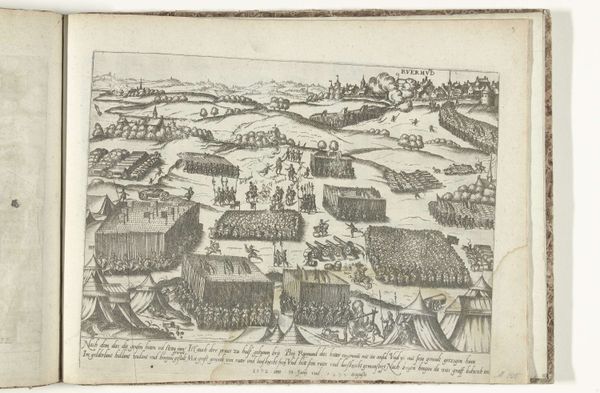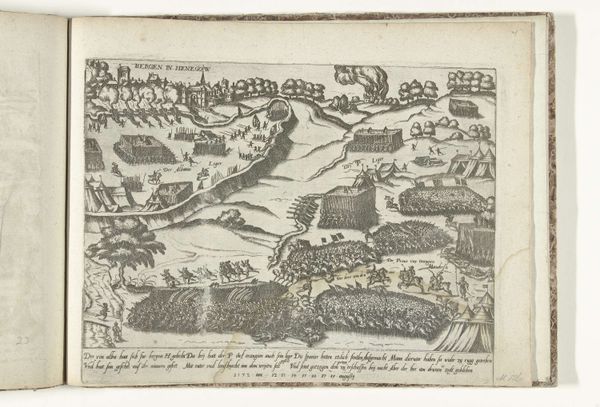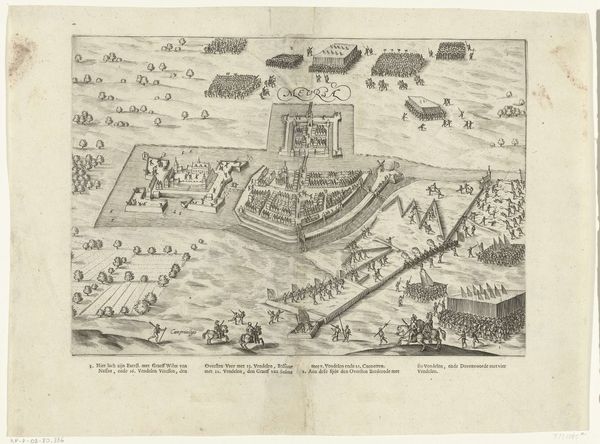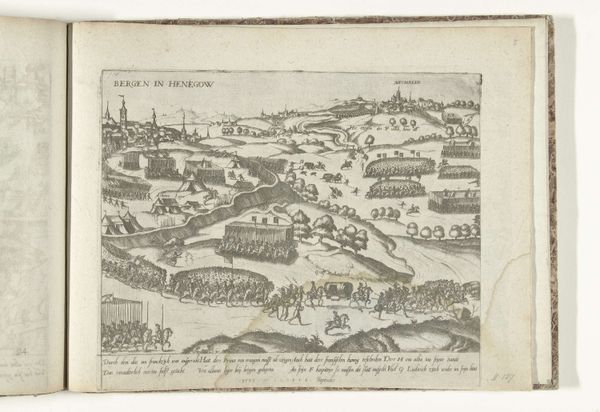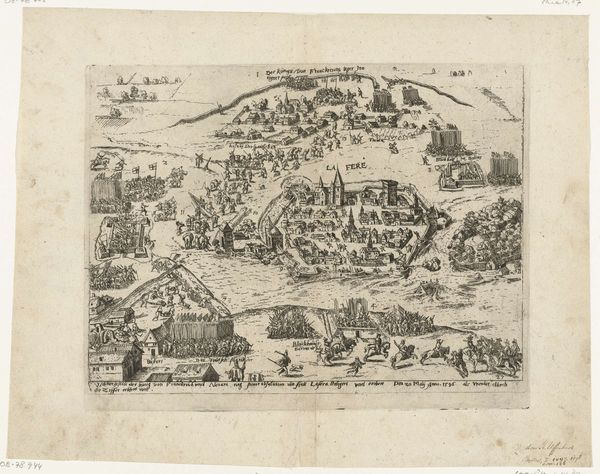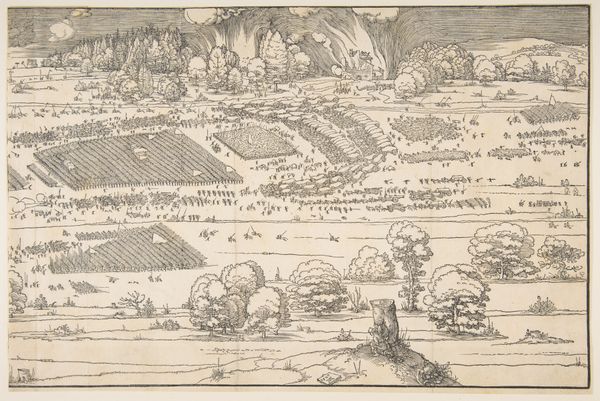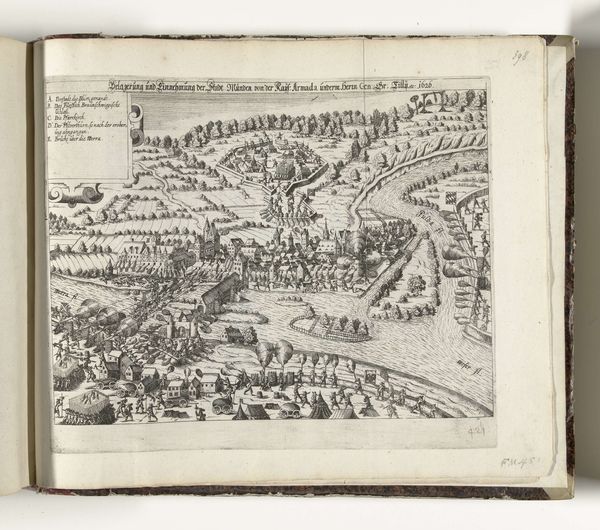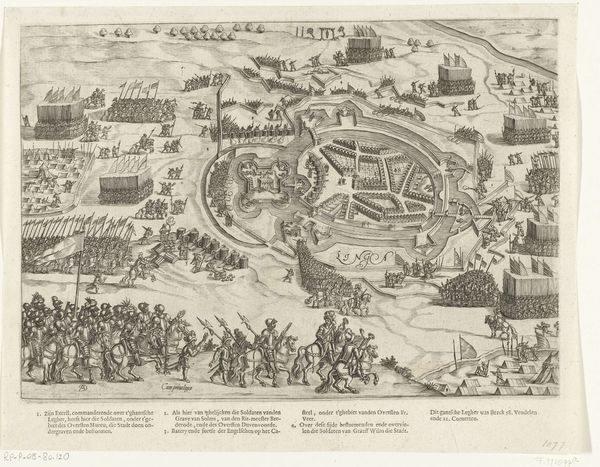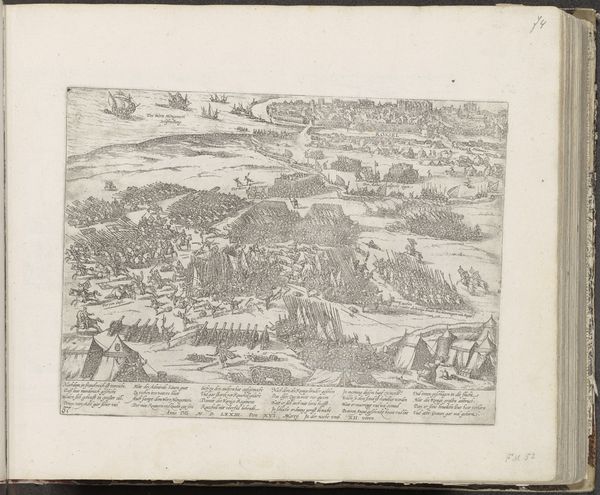
print, engraving
#
medieval
# print
#
landscape
#
history-painting
#
engraving
Dimensions: height 240 mm, width 310 mm
Copyright: Rijks Museum: Open Domain
Curator: This engraving, dating from 1572-1574, depicts the Capture of Zutphen by Don Frederik in 1572, currently held in the Rijksmuseum. Its anonymous creation gives us an interesting puzzle to consider. Editor: The composition really draws my eye, despite the relatively small scale. The artist seems to want to document everything from the individual tents to the sweep of the river. There’s almost a clinical detachment despite what I assume was a rather brutal historical event. Curator: Indeed. These prints served an important socio-political purpose. The detailed landscape provides a stage for the unfolding drama, idealizing the Dutch landscape and its occupation, legitimizing the role of power by external forces and its institutions.. The anonymous nature of the work ensures its widespread distribution and collective ownership of the story, Editor: Right, thinking about that level of detailed rendering… We’re seeing a landscape actively shaped and claimed. Considering its status as a print, its relatively easy distribution would mean the potential for reinforcing that claim and creating collective memory amongst very many people, perhaps more so than, say, an oil painting for a noble patron. The print becomes a form of cultural production of the period. Curator: Exactly! We see here the fusion of meticulous craftsmanship—look at the consistency of the lines—with a broader propagandistic function. Think about the engraving process; the labor invested in each plate. Then think about how each resulting print served as material for early newspapers and public notices during war times, actively consumed. It highlights how the seemingly simple print participates in the building of larger political power structures and ideas around nationhood and defense. Editor: So the making, displaying, and circulation becomes key. If one really thinks about how something like this would function in homes and gathering places as a reflection of power relations and news source, it's quite something. Looking at this print through that lens gives it such renewed agency. Curator: Yes. And reflecting on the conditions of artistic labor in the print shops alongside its relationship to cultural and historical power, we see the material means through which historical narratives become tangible, debatable and popular in a modern sense. Editor: Thinking through this depiction’s materiality, production, and function makes it so much richer of an artwork than a simple recording of history, giving insight on material agency in cultural identity. Curator: Precisely.
Comments
No comments
Be the first to comment and join the conversation on the ultimate creative platform.
